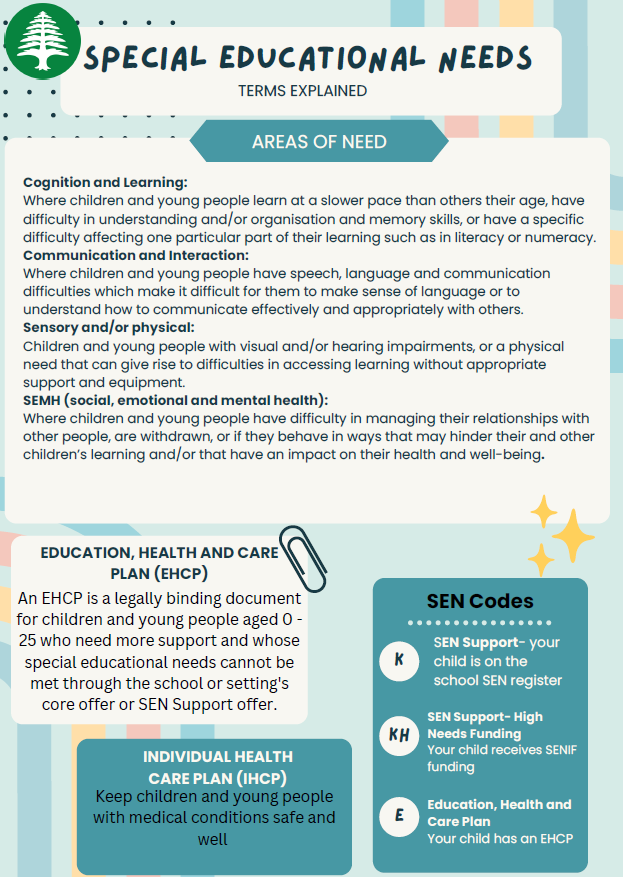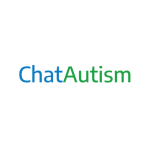As a parent or carer, you and school will need to communicate well with each other, to ensure these needs are met. You will need to speak with the teacher who specialises in supporting children with such needs. All schools have someone in this role. They are usually called the Special Educational Needs and Disabilities Co-Ordinator (SENDCo).
Taking steps to meet a person’s individual learning or health needs is known as making ‘reasonable adjustments’. When a child needs reasonable adjustments in an education setting, they are usually described as having ‘Special Educational Needs’ (SEN). Many people are not comfortable with this term, as it is seen as ‘othering’. However, it is the most widely used and recognised term in education to describe those children who need standard school practises, environments and equipment to be adapted for them.
When a child needs reasonable adjustments in school, it is often possible for the school to do this with the resources already available. They may document these needs in an Individual Education Plan (IEP). However, sometimes further resources are needed – and this is when the child may need an Education Health and Care Plan (EHCP).
This poster helps to explain some of the terminology around SENs in education:
This poster was created by the SENDCo of Broom Leys Primary School and shared with their kind permission.
EHCPs: Information and Advice for Parents and Carers
An Education, Health and Care Plan (EHCP) is a legal document which replaces Statements of SEN and Learning Difficulties Assessments for children and young people with special educational needs.
The following information has been shared with us by the kind permission of the author: The Leicestershire SEND Hub.
The Leicestershire SEND Hub is a parent carer led organisation for families of children and young people with additional or special educational needs and disabilities (SEND) who live or access services in Leicestershire. They aim to be a bridge between parent carers and their service providers.
For more information about this fantastic organisation, click the following link:
Click here for the link to the Leicestershire SEND hub
How to apply for an EHCP as a parent
Criteria
If a local authority (“LA”) is requested to carry out an EHC needs assessment by a parent, young person, school or college, they must consider the following: whether the child or young person has or may have special educational needs (“SEN”); and whether they may need special educational provision to be made through an EHC plan. Application & Process
Application and Process
Applying as a parent: Click this link to get an example letter to request an Education Health and Care Assessment
- Explain why you think your child may need an EHCP. Be clear about your child’s needs and how they impact their education.
- Provide evidence of your child’s needs. This could be from their school, correspondence with professionals working with your child, their diagnosis or SEND reports, Independent reports, the child’s Doctor or health professional, Speech and Language Therapist, Occupational Therapist and your observations and knowledge and those who know them well.
- Send the completed letter and evidence to the Director of Children’s Services at senaservice@leics.gov.uk
- You should hear from the SENA Assessment Team to either agree or disagree with the assessment. Within six weeks is the legal timeframe.
- If the EHC needs assessment goes ahead: click this link to find information on what to expect. If the EHC needs assessment does not go ahead: *YOU HAVE THE RIGHT TO APPEAL* click this link to find information on how to appeal.
- You will then be given a decision to issue an EHCP or not If yes, a draft EHCP will be issued for you to check. If it’s a no, you can appeal. Click this link to find information on appealing to the SEND tribunal.
- A final EHCP will be issued with a named school placement. If, at this point, you don’t agree, you still have a right to appeal to the SEND tribunal.
Checking an EHCP
Parents have many questions and worries about the contents of their child/young person’s EHCP.
What should be in each section?
What should it include?
How do I know if it’s good or not?
We know this can be overwhelming whether you are new to the process or undertaking annual reviews. It can be confusing, and you often rely on what professionals tell you.
EHCPs in detail
Section A – All About Me
Section A should contain the views, interests and aspirations of the child/young person and their parents. It should contain the child’s voice and illustrate who they are, their strengths and interests and who is important to them. It should be clear how the child/young person’s voice has been gathered, their means of communication, and what support they need to participate in developing their plan.
Section B – My Special Educational Needs
Contains all child/young person’s special educational needs that have been identified through the EHC assessment including education, health and social care needs which train or educate a child/young person. Each need should be stated separately to ensure that there is provision to meet each need. It helps if each need is numbered. The areas of need are; communication and interaction (C&I), social, emotional and mental health (SEMH), cognition and learning (C&L) and physical development (PD)
Section C – My Health Needs
It outlines the child/young person’s health needs and should be written in simple, understandable language so that non-medical people can understand. It may include diagnoses, but a diagnosis should not be used to describe needs, and the needs associated with the diagnoses should be clear and specific and outline the child/young person’s day-to-day impact on the activity.
Section D – My Social Care Needs Relating to SEND
Information on this can come from various sources: social workers, youth workers, teachers, etc. Just because a child/young person is not known to social services does not necessarily mean there are no social care needs; e.g. it could relate to being unable to access social activities because of their SEND needs.
Section E – Outcomes
These should be longer-term targets or goals and should be linked to the aspirations identified in Section A. They should be SMART – Specific, Measurable, Achievable, Realistic and Time-bound. From Year 9, preparation for adulthood (PFA) should have a focus, and there should be outcomes for higher education and paid employment, developing Independence, good health and friendships, relationships and community participation.
Section F – Provision
This is what must be provided to meet the child/young person’s special educational needs. It should be specified and quantified, and SMART. It should state exactly what will happen, who will do it, what skills, training and qualifications they need to deliver, how often it will happen, when and how often it will be reviewed, and by whom.
Sections G, H1 and H2 – Healthcare Provision
Health provision reasonably required by the learning difficulties or disabilities that result in the child/young person having SEN. It should be specified, quantified and SMART. It should state exactly what will happen, who will do it, what skills, training and qualifications they need to deliver, how often it will happen, when and how often it will be reviewed, and by whom. Section G, H1 & H2 -Healthcare provision H1 All services assessed as being needed for a disabled child or young person under 18 under section 2 of the Chronically Sick and disabled persons act 1970 (CSDPA) H2 – Any other social care provision reasonably required by the learning difficulties/disabilities.
Section I – Placement
Name and type of school, post 16 or other institution to be attended by the child/young person.
Section J and K – Personal Budget; Advice and Information
Details of the personal budget if allocated. How it will support particular outcomes. List of advice, information and reports gathered during EHC needs assessment and who wrote it and when. The actual reports must be attached in appendices.
The Golden Thread
You may have heard the term “The Golden Thread” being referred to with EHCPs.
This relates to the fact that there should be a clear and identifiable link between the aspirations, needs, provision and outcomes outlined in the EHCP that reflects the child holistically.
You should be able to see the links from needs, outcomes and provision throughout the EHCP.
Aspirations – These are the goals the child/young person and their parent carers want. E.g. what they want to do when they grow up and what they are interested in doing.
Needs – Children and young people with SEND all have disabilities or learning difficulties that make it harder for them to learn than others of the same age. The child/young person’s needs should be described in their EHCP.
Outcomes – These are the longer-term targets or goals personal to the child/young person’s SEND that are hoped to be achieved and make a difference in the child/young person’s life as a result of the interventions made through the provision outlined in the EHC plan.
They should be SMART- Specific, Measurable, Achievable, Realistic and Time Bound. Provision – This is the education or training needed that is different from that ordinarily available for children or young people of the same age
Leicester City
- SEND Local Offer page – Family Information | Education, health and care assessment and plans (leicester.gov.uk)
- SENDIASS – Education, Health and Care Plans – SENDIASS (sendiassleicester.org.uk)
- SENDIASS – EHCP Online Workshop – SENDIASS (sendiassleicester.org.uk). This is a 20 minute video where the SENDIASS Team provide a guide to the EHCP process.
Leicestershire
- SEND Local offer – Education, Health and Care Plan (EHCP) | Leicestershire County Council
- SENDIASS – Education health and care assessments and plans | SENDIASS (sendiassleicestershire.org.uk) On this page you will find information and practical advice about the EHC needs assessment process, existing EHCP plans and the review process.



